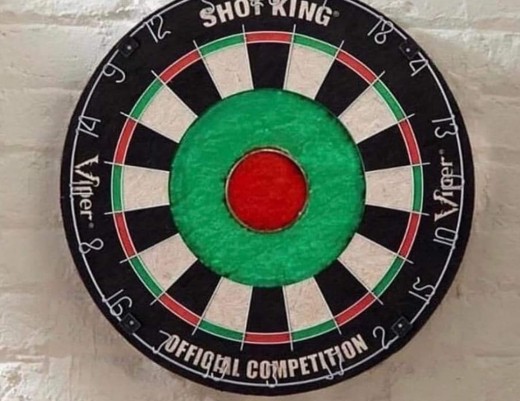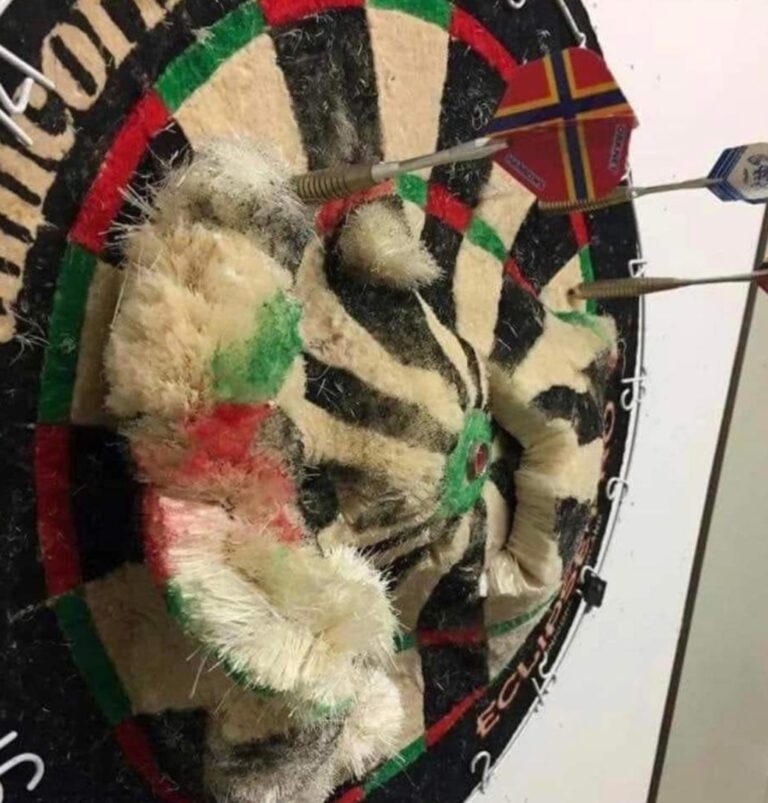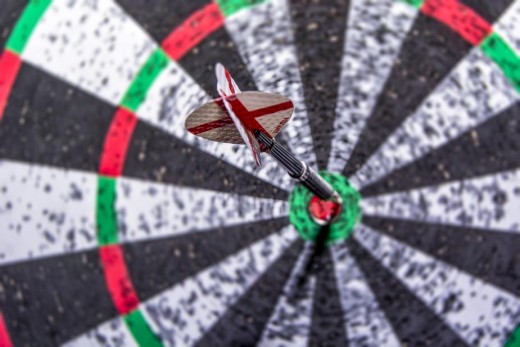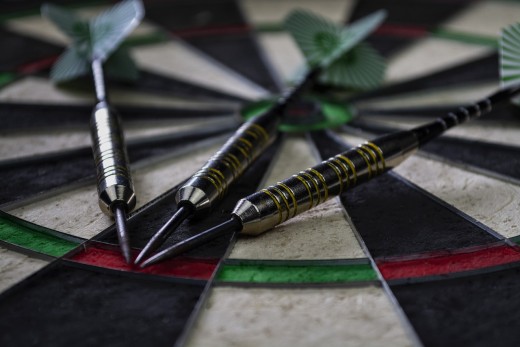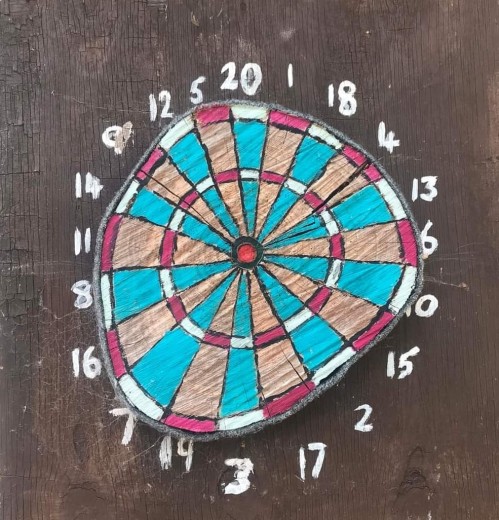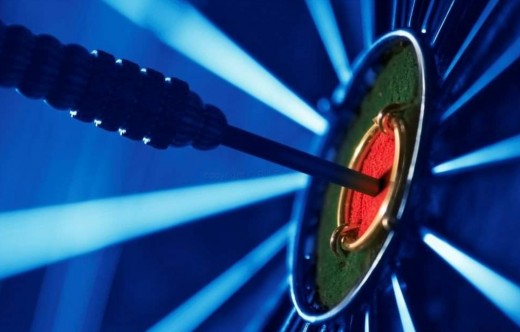June 1, 2001
Column 106
“Beers and Shots” Revisited
It was Greg Cason from the Orlando Pub Darts League who alerted me to the amazing spread about darts that appeared in the April 2, 2001 issue of Sports Illustrated. I dashed off immediately to find a copy. I went to the corner convenience store. Nothing but the swimsuit issue. I hit a couple of 7-11’s. Again, just swimsuit issues. I found a copy on Monday at Food Lion. Last night I finally had a chance to read the story. I’d have gotten to it sooner but, well, I had three copies of the swimsuit issue to examine first. Thanks Greg.
If you haven’t placed your hands on a copy of the April 2 issue yet I encourage you to hunt one down. Freelancer, Steve Rushin, wrote a hell of a story and, as loathe as I am to admit it, pretty much captured everything that is flat out disgusting about our sport. In “Beer and Shots” one message comes through loud and clear. And it was reinforced over and over again by the many British pros who had the opportunity to lift a jar and fire up a fag with Rushin. That is: darts and drinking go hand-in-hand.
This is not to say that there wasn’t an effort, perhaps even an honest one, to convey another message in Rushin’s story. It’s just that his attempt to make the point, as he put it, that “a dart is not merely rocket-shaped; it can be a rocket and generate escape velocity to break away from the gravitational pull of poverty,” was pretty much lost in his obsession with the association between our sport and drinking. And smoking. And tattoos. And profanity. And sex.
I can’t dispute that Rushin’s characterization of our sport — at least its relationship to drinking — is fundamentally accurate. Darts is a pub-bred sport. What else is new? So is pool. So is snooker. People drink in pubs. What I do take issue with is the essence of Rushin’s case that there is a direct relationship between the amount one drinks and their performance. That drinking is essential to good darts. That, at the highest levels, blotto is best.
There is a very clear line between the false confidence building properties of a few pints and finding yourself charged with chasing a couple of girls around a motor home. Neither side of the line equals better darts. If the opposite were true Tiger Woods would chug a six pack before teeing off. Jeff Gordon would get trashed before firing up his Chevrolet. The police would be ticketing the drivers who DON’T drink.
It’s a shame that Sports Illustrated sent someone off to write about darts and then published copy that focused almost exclusively on the negative — blowing even that out of proportion — and twisted into the Holy Grail the commentary of a less-than-representative handful of the British pros. And it is even more of a shame that when presented with such an unparalleled opportunity to promote the sport, the Brits who were interviewed could talk about little but hoisting a pint. No doubt most of their comments were made tongue and cheek. Surely many of them were surprised to see their witticisms taken out of context — used to make them look like wankers.
Framed between a full-page black-and-white photo of good ole boy Andy Fordham caressing a beer and a quarter-page shot of a couple of female fans sporting tee-shirts with the caption “Life is Simple: Sex, Beer, Darts,” Rushin sets his theme of destruction with the opening paragraph. “Ted Hankey sits at the bar. His left palm is slapped up against his brow so that a cigarette plugged between his fingers seems to grow from his forehead. It looks like a unicorn horn. Hankey’s right palm rests on a cardboard coaster, as if he’s taking an alcoholic’s oath. The barman sets a pint in front of him, and Hankey, with both hands, moves it a millimeter closer. Bald and badly tattooed, with skin the color of wallpaper paste, Hankey will look tonight, under the unforgiving lights of television, as if he were two decades older than his 32 years. Now, though, bent over his beer, he looks beautiful – born to the bar, one hand on his head and one on his Harp, lost in concentration, a Rodin sculpture: The Drinker.”
Hankey’s a half-hour away from heading to the stage for the semi-final round of the Embassy World Darts Championship in Frimley Green. He’s loosening up his arm. To expect anything less would be unheard of, suggests the author. To support this claim Rushin slips in a 30-year old quote from Cliff Lazerenko, the gist of which is that for a world class darter to perform at their peak without a drink in their hand is as unlikely as expecting “Mark Spitz to set world records in two feet of water.”
Hankey’s opponent is Fordham. Rushin beads in further. He asks Fordham how he practices. Fordham responds with two words: “I don’t.” Rushin asks him how he spends his time. Fordham grunts out another two syllables: “I drink.” Rushin asks him what the tattoo on his arm says. “The Grim Reaper,” replies Fordham.
And “so it is” sums up Rushin – in just the seventh paragraph of his story. Case closed. Darters are a bunch of big, fat, beer-swilling dummies.
Don’t get me wrong. Rushin doesn’t exactly state any of this flat out. What he does, his intentions only partially camouflaged from the outset, is even worse. Ostensibly to support his premise (that much like shootin’ hoops in da ‘hood, darts is a low class activity that, for some, just might offer a glimmer of hope for the good life), for eleven unrelenting pages, he meticulously trashes our sport and, backhandedly, those who unwittingly helped him build his case. Bobby George lives in a mansion. Ray Barneveld’s a millionaire. Phil Taylor’s a three-fold millionaire. The secret to their success: darts. The secret to the success of their darts: like all world-class shooters, they’re also world-class boozers.
Rushin talks to one of the Embassy barmen who calculates that some 52,800 beers will be consumed during the tournament – the equivalent of “five beers a night for every man, woman and child in attendance.” Rushin asks the BBC’s darts announcer, Tony Green, why it seems that darts has been declining in popularity in England and then quotes Green: “To be perfectly honest with you, I think it was the introduction of the Breathalyzer.” Rushin paints 1992 Embassy finalist, Mike Gregory, with the quote: “It was a mistake to take the drinkin’ and smokin’ off the stage. Two thousand people in the audience are drinkin’ and smokin’, and the guy throwin’ darts has a bottle of water?” From the mouth of Embassy master of ceremonies, Martin Fitzmaurice, Rushin records: “Fordham wants him (John Walton) banned from darts, and the reason is — get this — he doesn’t drink!”
While giving darters credit for the “extraordinary physical reserve required to repeatedly hit … the double and treble beds, each of which has a surface area smaller than a fortune cookie slip” and while complimenting their ability to subtract, Rushin can’t help but also make the claim that “nearly all of them” are “high school dropouts” and “most of them” sport the “requisite tattoo on each forearm.”
So, there you go. According to Steve Rushin, darters are drunks. They smoke. They swear. They wear tattoos. They am dumb. “F—-‘ ‘ell,” the Brits might say…
But what about sex?
Fordham to the rescue. Near the end of the story, Rushin returns to the Viking sound-bite machine, who offers the following gem: “In ‘olland, the birds get their tits out for you to sign. I signed a bird’s bum once. She pulled up ‘er dress, and she ‘ad a G-string on underneath. She bent over, and I went like that (and makes a Zorro slash) with a marker.”
What’s the point of all of this? I absolutely do not know. Perhaps somebody should ask this of Sports Illustrated. While Rushin may have captured some of darts’ problems and, maybe, even a bit of the mystique, he missed far, far more. He did the sport a disservice. He did those he interviewed a disservice. He cheapened Sports Illustrated.
Yes, darts has an image problem. But there are many people working very hard to improve the image of our sport. Dress codes. Drink and smoke-free venues. The commendable efforts to conduct youth events and bring new people into a clean environment. The emphasis on sportsmanship. And charity.
There are people all over the sport of darts who present a much different image than that presented in this story. Men like Paul Lim, John Part, Steve Brown, Dan Lauby and Roger Carter. Women like Julie Nicoll, Lori Verrier, Stacy Bromberg, Tina DiGregorio and Marilyn Popp. Darters who respect themselves. Darters who respect the sport. Darts would have been much more fairly represented if even one of these individuals, among so many others, had been interviewed.
Indeed, darts would have been much more fairly represented if Rushin had been true to many of those he did interview.
Darts would have been much more fairly represented if Rushin had made even a half-hearted attempt to uncover all that darts is, rather than just sit in a pub in Frimley Green for a week drinking and smoking cigarettes.
Imagine, just for a moment, if instead of framing his story around a shot of Andy Fordham holding a beer and a group of girls wearing “Sex, Beer, Darts” tee-shirts, Rushin had selected photos of children. Perhaps one of a young wheel-chair bound girl. Another of a teenage boy, wearing a baseball cap to hide the effects of his chemotherapy, enjoying a ball game. Perhaps still another of a tiny infant with a crinkled smile on her face. Imagine then, that the captions beneath the photos acknowledged the role of darters — darters all over the world — in supporting the life-saving work of charitable organizations like those which helped care for these three children: the Muscular Dystrophy Foundation, the Make-a-Wish Foundation and St. Bartholomew’s Hospital.
Due to the way such donations are sometimes accounted for it’s impossible to get an accurate bead on exactly how much the darting community has raised for Jerry’s Kids and the children Make-a-Wish helps. However, even a cursory attempt to measure this support makes it clear that the figure reaches deep into the millions of dollars. The Norwalk (Connecticut) British Dart League has raised and donated more than $60,000 to Make-a-Wish over the past ten years. My own league, the Tidewater (Virginia) Area Darts Association, has contributed almost $35,000 to the Muscular Dystrophy Foundation since 1990. Through her personal “Score for Charity” effort, Stacy Bromberg alone has raised over $25,000 for Make-a-Wish.
Worldwide, there are estimated to be some 60 million regular participants in our sport. In all likelihood, most of these individuals have in some way, through their darts involvement, donated their time and money to help those less fortunate. In Victoria, British Colombia, there are three leagues and by mandate they are organized in large part to raise funds for charity — they donate several thousand dollars annually to their local hospice and the Brain Tumor Society. The St. Charles (Missouri) Dart League holds an annual 1,000,001 tournament to benefit a children’s handicap camp at the Lake of the Ozarks. The Austin (Texas) Dart Association contributes up to $5,000 each year to the local children’s hospital and Faith House, a home for pediatric AIDS patients. National Darts Hall of Fame candidate, Mischelle Johnson, from California is currently organizing an event called “Darts Across the Nation” to help raise funds for the Lupus Foundation of America.
In my travels I have interacted with darters and darts organizations all over the world which devote significant efforts to charitable fund raising. In Hanoi, Vietnam darters organize to raise money for a charity called Operation Smile, which repairs cleft lips and cleft pallets for indigent children. In Bangkok, Thailand I met a group of shooters which was organizing to raise funds for a new foundation dedicated to helping the families of police officers killed in the line of duty. There are darters in South Africa, Zimbabwe and Uganda who organize events to help poor children, notably those born with AIDS. Such generosity is common throughout the darting world.
But Bartholomew’s Hospital? What is that? Where is it? The answer sheds even more light on how unfair Rushin and Sports Illustrated were to Andy Fordham, among so many others, in the feature “Beers and Shots.” St. Bartholomew’s is the London hospital in which Fordham’s newly-born daughter was cared for when she suffered from a heart condition at birth.
Not long ago, Fordham was asked to serve in a specially created post for “Barts Hearts,” the fund raising committee which supports St. Bartholomew’s. He does exhibitions to raise money for the cause and donates personal items for auctions. He sets out a collection jar at his pub, the Queen’s Arms, in Woolwich. When asked by a real reporter how he felt about this honor, Fordham quietly offered that it was “like winning my own world championship. I feel immensely proud and quite humble.”
This HARDLY sounds like the beer-guzzlin’, single syllable-speaking’, bosom-signin’ Andy Fordham portrayed by Steve Rushin. It is truly unfortunate that the readers of Sports Illustrated were provided such a skewed, one dimensional view of one of the most likable and kind-hearted personalities in the sport of darts.
The same applies to many of the others. Bobby George is the spirit behind the Bobby George Darts Marathon — a country-wide darts fund raiser that has raised incredible sums for needy children. George was asked once, again — by a real reporter, about the negative image from which our sport suffers. “A lot of people say that darts is all beer drinkers and big, fat guts. They’re not all (drinkers and fat). I know surgeons and magistrates, people from all walks of life, who play darts.” This hardly sounds like the guy who Rushin brands as living a lifestyle of “booze, fags and cars.”
Trina Gulliver, currently the world’s top ranked woman’s darter, serves as the president of a relatively new organization called the Heart of Darts. Set up to support “groups and individuals who are not supported by their own official charities” the Heart of Darts involves darters of all skill levels and from all over the world in their fund raising activities. And right smack dab in the middle of those most heavily involved is none other than, you guessed it: Andy Fordham.
I’m not suggesting that Steve Rushin and Sports Illustrated should have published a feature about darts and charity. I’m only suggesting that if the world’s most respected sports magazine is going to cover a sport or a sporting event, it is reasonable to expect the coverage to be unbiased.
The darting community is a whole lot more than a collection of tattooed, cigarette smokin’, uneducated, drunks.
What Rushin did to darts was flat-out unfair.
So imagine with me for just one more moment. I’m compelled to even the score.
Wearing a worn Ohio State sweatshirt with a large marijuana-like buckeye leaf on the back and a New York Mets baseball cap, turned sideways, Steve Rushin looks out of place as he elbows his way through the queue at the Peninsular Bar in Frimley Green. Loudly, in his distinctive midwestern drawl, and while fishing clumsily around in his pocket for the correct change, Rushin orders a Budweiser and a bag of chips. “Sorry, mate,” responds the barman, “how ’bout a Harp an’ a sack of crisps?”
“What’s a crisp?” inquires Rushin. A few heads turn in the bar.
“Crisps are chips. Chips are french fries.”
“Fine. Gimme whatever ya got. Just make sure the beer’s cold.” Rushin shoves three silver coins across the bar. He lights a Marlboro. “Keep the change, bro.”
“Cheers mate, but that’s 60 pence,” observes the barman. Gently he sets Rushin’s beer and crisps on the bar. “The charge is two quid.”
Rushin looks quizzically at the barman. To the regulars he’s an all too familiar sight. American. Loud and unabashedly arrogant. Silly. One hand nervously fumbling in his trousers, the other dangling a cigarette, baseball cap askew. Much like a fledgling darter facing a simple 46-close, confident but not so confident (and throwing the 14, like a fool), Rushin is also lost. He’s lost in the middle of a bar in a foreign land, preparing to write about something he doesn’t understand, and certain to represent himself accordingly, like an old Walt Disney icon: Dumbo.
From the Field,
Dartoid

